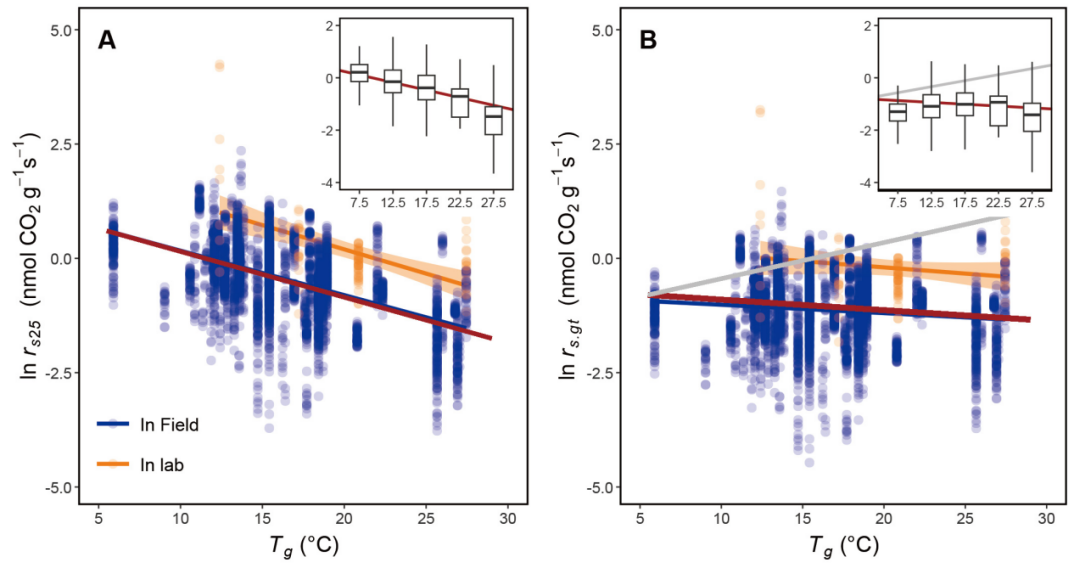2025-06-27 清華大学
 Figure 1. Global trends of stem respiration rate per unit mass at the reference temperature (rs25) and growing temperature (rs.gt) in relation to the growth temperature (Tg, mean temperature of the growing season with daily average temperature above 5℃). Note: Respiration data are presented as natural logarithms.
Figure 1. Global trends of stem respiration rate per unit mass at the reference temperature (rs25) and growing temperature (rs.gt) in relation to the growth temperature (Tg, mean temperature of the growing season with daily average temperature above 5℃). Note: Respiration data are presented as natural logarithms.
<関連情報>
- https://www.tsinghua.edu.cn/en/info/1245/14347.htm
- https://www.science.org/doi/10.1126/science.adr9978
茎の呼吸の温度順化は炭素-気候フィードバックが弱いことを示唆している Thermal acclimation of stem respiration implies a weaker carbon-climate feedback
Han Zhang, Han Wang, Ian J. Wright, I. Colin Prentice, […] , and Ngoc Bao Nguyen
Science Published:29 May 2025
DOI:https://doi.org/10.1126/science.adr9978
Editor’s summary
Plant respiration contributes several times the amount of carbon emissions to the atmosphere as anthropogenic sources. Respiration also increases with temperature, leading to a positive feedback loop. However, plants can acclimatize to warmer temperatures and reduce their respiration rate. Using a model based on ecological-evolutionary optimality principles, Zhang et al. predicted the rate of respiration acclimation to warming driven by decreasing water viscosity within the plant. They then tested these predictions using a dataset of stem respiration measurements from 186 woody plant species collected in the field and laboratory. Incorporating thermal acclimation into emissions projections reduced the predicted terrestrial carbon emissions estimate by nearly one third. —Bianca Lopez
Abstract
The efflux of carbon dioxide (CO2) from woody stems, a proxy for stem respiration, is a critical carbon flux from ecosystems to the atmosphere, which increases with temperature on short timescales. However, plants acclimate their respiratory response to temperature on longer timescales, potentially weakening the carbon-climate feedback. The magnitude of this acclimation is uncertain despite its importance for predicting future climate change. We develop an optimality-based theory dynamically linking stem respiration with leaf water supply to predict its thermal acclimation. We show that the theory accurately reproduces observations of spatial and seasonal change. We estimate the global value for current annual stem CO2 efflux as 27.4 ± 5.9 PgC. By 2100, incorporating thermal acclimation reduces projected stem respiration without considering acclimation by 24 to 46%, thus reducing land ecosystem carbon emissions.



